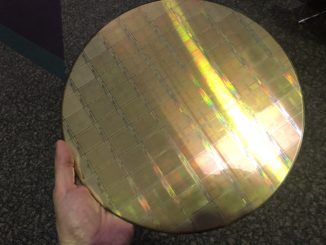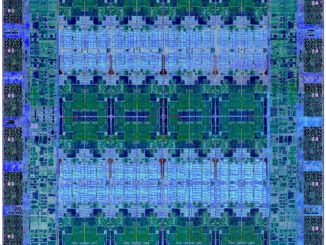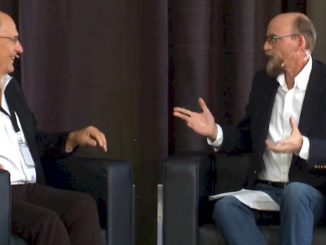
It is the first month of a new year, and this is the time that IBM traditionally does reorganizations of its business lines and plays musical chairs with its executives to reconfigure itself for the coming year. And just like clockwork, late last week the top brass at Big Blue did internal announcements explaining the changes it is making to transform its wares into a platform better suited to the times.
The first big change, and one that may have precipitated all of the others that have been set in place, is Robert LeBlanc, who is the senior vice president of the IBM Cloud division, will be retiring after 36 years at the company.
Like many of the people currently in charge at IBM, LeBlanc came up through the software side of the company, and in this case LeBlanc was in charge of the Tivoli systems management suite after its acquisition for $743 million back in February 1996. (This Tivoli deal, along with the $3.5 billion deal to buy groupware maker Lotus in June 1995, gave IBM a credible software business outside of its proprietary mainframes and midrange systems.) In various senior leadership roles, LeBlanc has managed various middleware stacks as well as worldwide software sales, and a year ago was made senior vice president of the Software And Cloud Solutions Group, the part of the former Software Group behemoth that was disaggregated when Steve Mills, who headed up Systems Group and Software Group together, himself retired. More recently, LeBlanc was in charge of the IBM Cloud division, the new name for the amalgamation of the SoftLayer public cloud, which IBM bought in June 2013 for $2 billion, and various application hosting business it ran itself plus the various Watson services it sells.
“Robert has had a wonderful and accomplished career,” Ginni Rometty, chairman, president, and chief executive officer at IBM, said in an internal memo to employees. “He is known as a founding father of IBM’s software business, but his imprint on the IBM company goes much deeper. He started up the IBM Security business, which is now the market share leader. He had the foresight to invest in and build up our expertise in IBM Design. And in just a few years he has established and scaled IBM Cloud to become the enterprise leader.”
In a related move, Bob Picciano, who has been in charge of its myriad analytics software tools and has been heading up the commercialization of the Watson question-answer system is now in charge of a tweaked Power Systems server line that will be known as the Cognitive Systems division. Picciano will report directly to Tom Rosamilia, senior vice president in charge of IBM Systems and arguably the number two person and heir apparent to Rometty when she retires in the next year or two. (We talked about this when going over IBM’s financial results for the fourth quarter last week.)
“We are aggressively reinventing our systems portfolio for cloud, data and AI,” Rometty continued in the memo. “The centerpiece of Cognitive Systems is our Power franchise, which is vital to so many clients and ecosystem partners. Having envisioned and transformed our data and analytics portfolio, Bob is ideally suited for this role.”
Picciano replaces Doug Balog, who had been general manager of the Power Systems division and who is going back to his storage roots at the company with his appointment as general manager of Storage Client Success. Rather than reporting to Ed Walsh, who was recently appointed general manager of the IBM Storage Systems division (before this set of changes) and who responsible for the tape, disk, and flash storage product lines and file systems at Big Blue, Balog will report directly to Rosamilia. This reflects the same separation of products and sales that exists for the former Power Systems server and System z mainframe lines. Paulo Carvao is in charge of field sales and technical teams for the two server lines, and Balog now has that role for storage. Shifting from products to sales is a common thing for IBM’s key executives. IBM likes for its managers to have experience in different geographies and different parts of the IBM business as they ascend the corporate ladder.
Rosamilia has made no secret that he wants IBM’s Power chips to take a bite out of the Intel Xeon processor in the datacenter, and the OpenPower foundation was created explicitly to try to get the Power platform somewhere between 10 percent and 20 percent of the market, by Rosamilia’s own reckoning. That is a tall order, but if you want to hit something, you might as well aim high.
“In this role, he will lead the Power business – taking it to the next level as we double down to disrupt X86 and make Power the platform for the cognitive era,” Rosamilia said in his own memo to employees in the Systems group. “With his leadership in transforming our data and analytics portfolio, Bob is ideally suited for this opportunity.”
IBM’s use of the term cognitive is quite broad, and includes old-school database management systems, transaction processing middleware, and lots of integration and application serving software that runs on its own Power Systems and System z mainframes as well as other competing Windows, Unix, and Linux platforms. It is in this way that IBM is referring to the Power platform as a cognitive system. Importantly, IBM’s own Watson question-answer system has been tuned to run on Power systems, although there is absolutely no reason why it could not run on Xeon, Opteron, or ARM processors.
The focus on cognitive in the branding for the Power Systems line is not meant to alienate the HPC customer base that IBM is also trying to encourage to move from X86 clusters to either Power clusters or hybrid machines mixing Power processors and either GPU or FPGA accelerators to run their simulation and modeling applications. This is a sizeable portion of the current – and growing – part of the Power Systems business that is using Linux operating systems rather than Power Systems iron running IBM’s own AIX Unix variant or proprietary IBM i (formerly OS/400) operating system. AIX and IBM i are almost exclusively used to run traditional databases, data warehouses, and transaction processing applications. IBM is using cognitive as an umbrella term that covers traditional transaction processing and analytics and the new workloads such as machine learning, including frameworks developed by hyperscalers as well as its own Watson tools. It would be a stretch to call a supercomputer a cognitive system, but then again, when simulations and models are infused with machine learning on the same system to derive insight – as is happening across all makers of HPC systems – maybe this will not be such a crazy idea after all. HPC will be but one lobe in a brain doing lots of complicated things in a giant workflow, to use an imperfect analogy.
One consequence of this realignment of executives and divisions at IBM is that the cross-divisional IBM Analytics business formerly run by Picciano and the IBM Cloud business formerly run by LeBlanc are being brought together into a new Hybrid Cloud business that will be run by Arvind Krishna, who is already a senior vice president and a director of IBM Research. Krishna will report to John Kelly, who has headed up IBM Research for many years and is now senior vice president in charge of Cognitive Solutions and IBM Research.
That latter bit, with Kelly in charge of all of those cognitive wares as well as IBM’s vast research and development operations, brings home the message that Big Blue is focusing its scientists on solving real problems for the big businesses of the world that have big bucks and do not – and cannot – do it all themselves like Google, Amazon, Facebook, Apple, Microsoft, Baidu, Tencent, Alibaba, China Mobile, Yahoo, and a few other hyperscalers.





IBM, ‘I’ve Been Moved’.
This is a positive sign for Cloud even if long overdue. Yuge ego and screaming management style that won’t be missed.